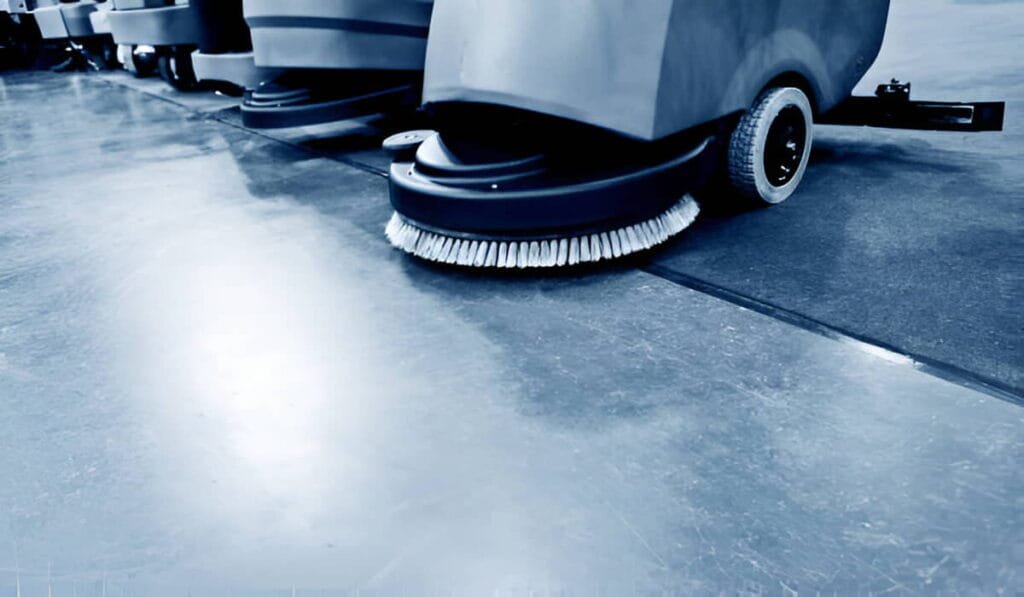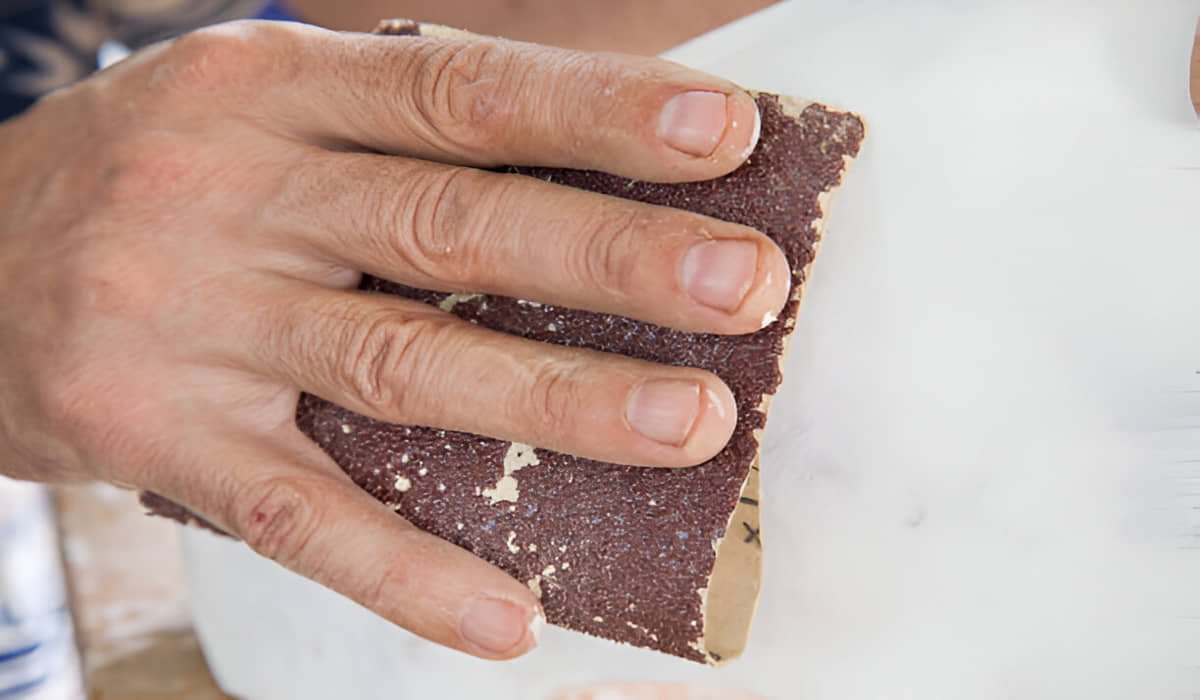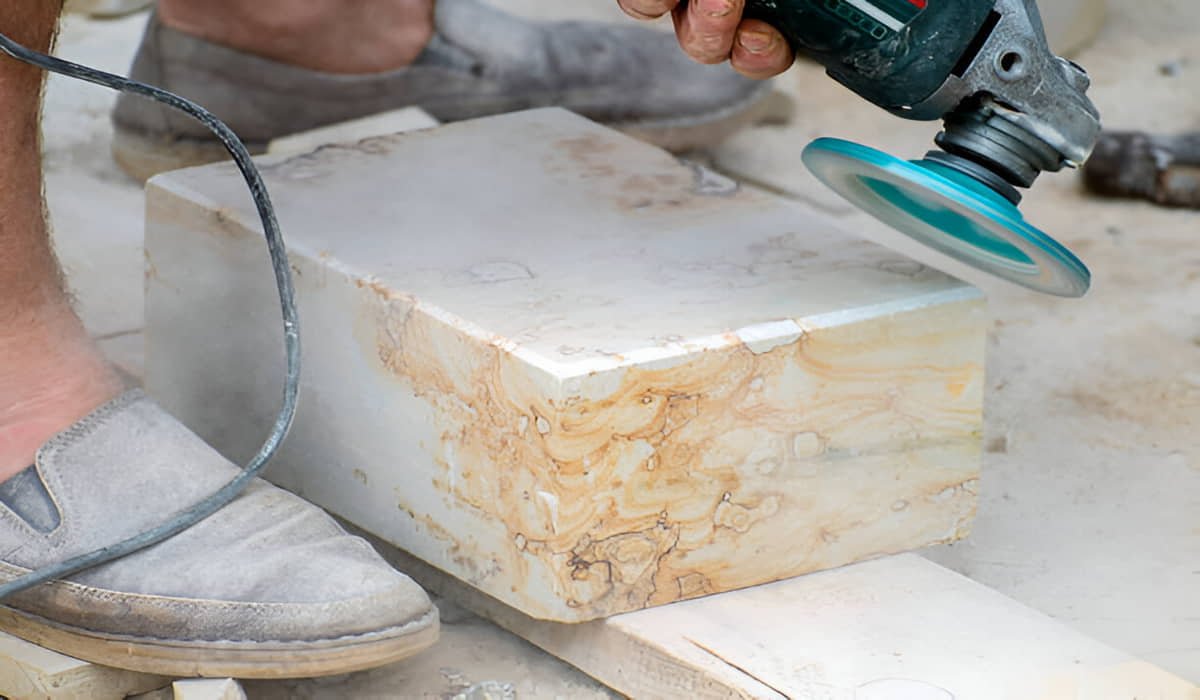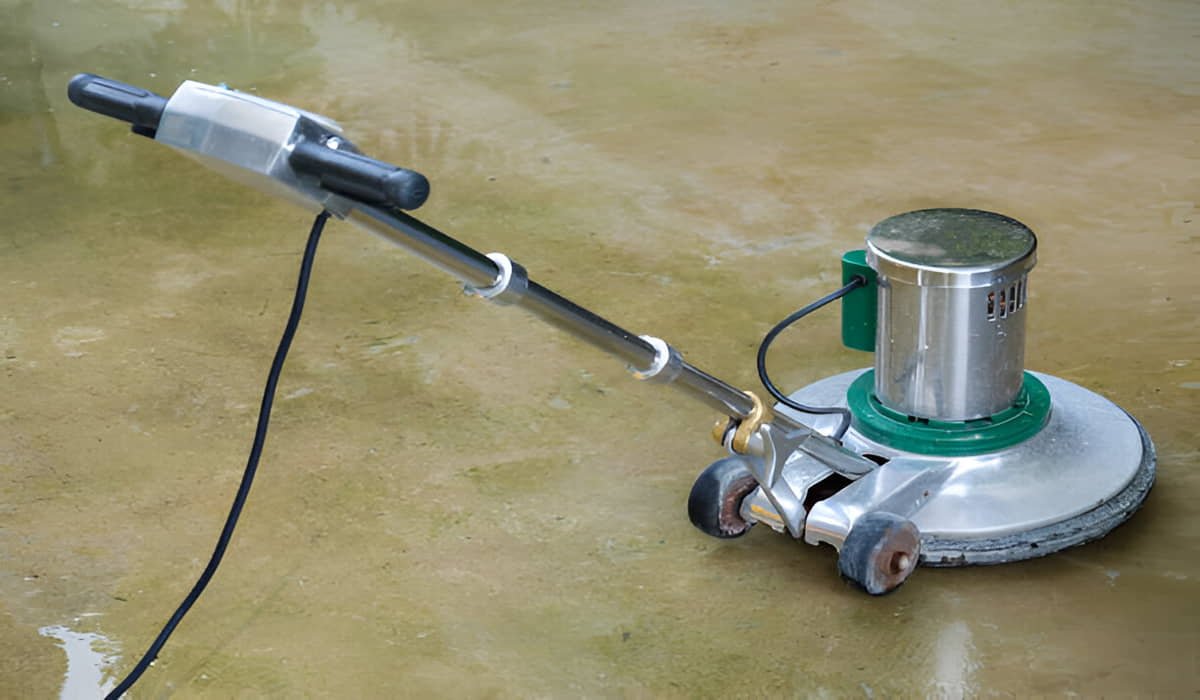Marble shines because of how it’s treated. Buffing and polishing are two ways to make marble look smooth and bright. But they’re not the same thing.
Buffing is a quick process that removes light scratches and dullness. Polishing goes deeper to restore marble’s shine and smoothness by using finer abrasives and sometimes special compounds.
Both improve marble’s look, but they do it in different ways.
What Does Buffing Marble Mean?
Buffing is like giving marble a quick rub. Imagine wiping a dusty table with a soft cloth. Buffing removes tiny marks on the surface, making it look cleaner and a bit shinier.
This process uses a machine with a soft pad that spins fast. It smooths out minor scratches and dull spots. Buffing doesn’t change marble’s texture much. It only refreshes the surface.
Buffing is often done when the marble has just lost its sparkle but is not deeply damaged. It’s a light fix, like putting on a fresh coat of polish on shoes to make them look neat again.
How Does Polishing Marble Work?
Polishing is more thorough. Think of polishing as sanding wood smooth with finer and finer sandpaper until it shines. Polishing marble removes thin layers of the surface. It erases deeper scratches and stains.
This process uses diamond pads or powders that slowly grind down the marble. Polishing opens up the marble’s pores, then seals them to keep out dirt and water. The result is a shiny, smooth, and glossy surface that looks like new.
Polishing takes longer and costs more than buffing. It’s usually done when marble looks dull or scratched deeply, or after buffing doesn’t help anymore.
What Tools Do You Use for Buffing and Polishing?
Buffing uses soft pads and sometimes light polishing compounds. The tool is often a floor buffer or a hand machine with lower grit pads (around 1500 grit or less). The goal is to smooth the surface gently.
Polishing requires tougher tools like diamond grinding pads or powders with finer grits (2000 grit and higher). These tools slowly shave off tiny layers to smooth the marble deeper. Professionals often use special polishing machines with variable speeds.
Which One Should You Choose?
Buffing is best for quick fixes on marble that only has light wear or scratches. Polishing is needed when marble needs serious work, like deep scratches, stains, or when you want the full glossy shine back.
If your marble looks a bit dull after a while, buffing can bring back some shine quickly. But if the surface feels rough or scratched deeply, polishing is the right call.

Can You Buff and Polish Marble Yourself?
You can try buffing yourself with small machines or hand tools. It’s simple if the marble isn’t badly damaged. But polishing needs skill and special equipment. Doing it wrong can damage marble by making scratches worse or uneven surfaces.
For best results, hire a pro for marble polishing. They know the right tools and pressure to use.
How Often Should You Buff or Polish Marble?
Buffing can be done regularly, maybe every few months, depending on how much wear your marble gets. It’s like a quick touch-up to keep the shine alive.
Polishing should happen less often, usually once every few years. Polishing removes some marble surface each time, so doing it too often can wear down the stone.
What Are the Costs Like?
Buffing is cheaper since it’s faster and uses less equipment. It’s a good choice if your marble needs light maintenance.
Polishing is more expensive because it’s time-consuming and requires expert skill. But it’s worth it if your marble needs deep repair or you want a bright, new look. Check the cost of marble polishing here.
What Are the Signs Your Marble Needs Buffing?
- Surface looks dull but feels smooth
- Light scratches or scuff marks
- Loss of shine but no deep damage
Buffing is like a light dusting. It cleans up minor problems without heavy work.
What Are the Signs Your Marble Needs Polishing?
- Marble feels rough or uneven
- Deep scratches or stains
- Surface looks old and worn out
- Loss of shine after buffing
Polishing is more like sanding wood smooth again. It repairs deeper damage.
Can Buffing and Polishing Damage Marble?
Both can damage marble if done wrong. Buffing too hard can cause heat buildup and cracks. Polishing with the wrong grit or tools can leave scratches or uneven surfaces.
That’s why it’s important to use the right tools and techniques. If you’re unsure, it’s best to call a professional.
How Do Buffing and Polishing Affect Marble Longevity?
Buffing keeps marble looking nice between deeper treatments. It doesn’t harm the stone if done gently.
Polishing restores marble’s surface, making it stronger and more resistant to stains and scratches. But polishing removes some marble, so don’t polish too often.
What About Sealing After Buffing or Polishing?
Marble needs sealing to protect it from stains and water damage. Sealing fills in tiny pores and makes cleaning easier.
Buffing might not open pores enough for sealers to work well. Polishing opens pores more, so sealing is especially important afterward.
Always seal marble after polishing to lock in the shine and protect the surface.
Quick Summary of Buffing vs Polishing
| Aspect | Buffing | Polishing |
|---|---|---|
| Purpose | Light scratch removal | Deep scratch removal and shine |
| Tools | Soft pads, light compounds | Diamond pads, powders |
| Time & Cost | Quick, affordable | Longer, more costly |
| Surface Effect | Refreshes surface | Smooths and restores surface |
| Skill Level | Can be DIY | Best left to professionals |
| Frequency | More frequent (months) | Less frequent (years) |
| Sealing Needed | Sometimes | Always |
Final Thoughts
Marble is like a fine piece of art. Buffing is like dusting it gently, while polishing is like cleaning and restoring it carefully. You’ll want to buff often to keep it fresh. When it looks worn, polish it to bring back the shine.
If you’re not sure what your marble needs, test buffing first. If that doesn’t fix the problem, polishing is the answer.
Taking care of marble the right way keeps it beautiful for years.






